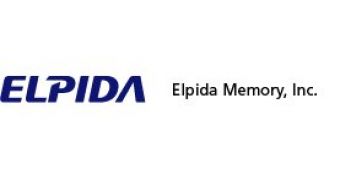The demand for better and faster memory has been on the rise along with the popularity growth of digital equipment (digital TV, cameras and others). This propelled memory developers to always improve the speeds and capacities of memory modules in general. Still, among those in need of better RAM are also end-users who own PCs running on 32-bit central processing units and who can't, or won't, purchase a new system anytime soon. To allow these consumers to improve their systems' memory capacity, Japanese Dynamic Random Access Memory (DRAM) supplier Elpida developed the 2-Gigabit x32-bit I/O DDR2 SDRAM.
Coming with a data width of both x16-bit and x32-bit, These new products will satisfy the needs of not only 1.8V x32-bit and x16-bit I/O, but also those of low-voltage 1.5V x32-bit and x16-bit I/O (useful for low-power mobile devices). With the 2 Gigabits of memory, 32-bit CPU-based configurations will be able to reach their required 2-Gb density by using a single memory module, instead of using two 1Gb x16-bit I/O chips.
This halves the number of necessary memory chips, thus conserving mounting space, simplifies the high-speed memory bus design and reduces power consumption, especially when operating at low voltage.
The products are manufactured using a 50nm CMOS, have a maximum per-pin data transfer rate of 1066Mbps, may operate under temperatures ranging from 0 to 95°C and come packaged into lead- and halogen-free 84 ball FBGA for the x16-bit and 128 ball FPGA for the x32-bit. The chips will be aimed for use in digital TVs, Blu-ray disk players and BR disk recorders, set-top boxes, digital still cameras, digital video recorders, netbooks and mostly any other 32-bit CPU-based products.
While, as previously mentioned, Elpida has only just started making sample shipments, the mass production of these new memory solutions is scheduled for the second quarter of 2010 (April-June).

 14 DAY TRIAL //
14 DAY TRIAL //